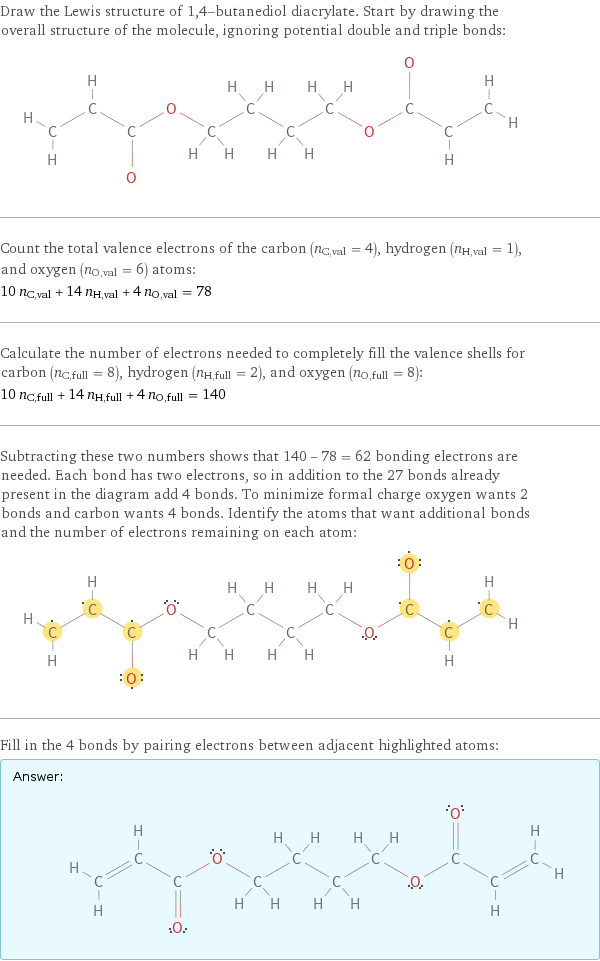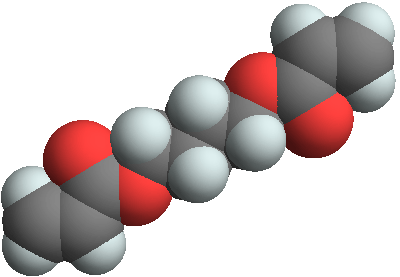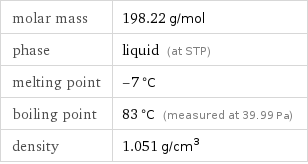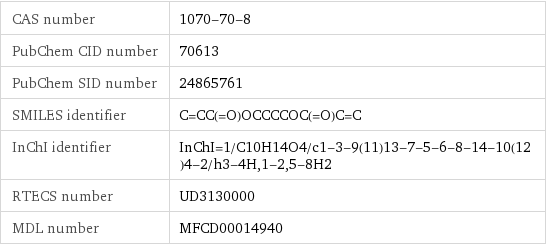Input interpretation

1, 4-butanediol diacrylate
Chemical names and formulas

formula | (-CH_2CH_2OCOCH=CH_2)_2 Hill formula | C_10H_14O_4 name | 1, 4-butanediol diacrylate IUPAC name | prop-2-enoic acid 4-(1-oxoprop-2-enoxy)butyl ester alternate names | 1, 4-butylene diacrylate | 4-prop-2-enoyloxybutyl prop-2-enoate | acrylic acid 4-acryloyloxybutyl ester | butanediol diacrylate | tetramethylene diacrylate | tetramethylene glycol diacrylate mass fractions | C (carbon) 60.6% | H (hydrogen) 7.12% | O (oxygen) 32.3%
Lewis structure

Draw the Lewis structure of 1, 4-butanediol diacrylate. Start by drawing the overall structure of the molecule, ignoring potential double and triple bonds: Count the total valence electrons of the carbon (n_C, val = 4), hydrogen (n_H, val = 1), and oxygen (n_O, val = 6) atoms: 10 n_C, val + 14 n_H, val + 4 n_O, val = 78 Calculate the number of electrons needed to completely fill the valence shells for carbon (n_C, full = 8), hydrogen (n_H, full = 2), and oxygen (n_O, full = 8): 10 n_C, full + 14 n_H, full + 4 n_O, full = 140 Subtracting these two numbers shows that 140 - 78 = 62 bonding electrons are needed. Each bond has two electrons, so in addition to the 27 bonds already present in the diagram add 4 bonds. To minimize formal charge oxygen wants 2 bonds and carbon wants 4 bonds. Identify the atoms that want additional bonds and the number of electrons remaining on each atom: Fill in the 4 bonds by pairing electrons between adjacent highlighted atoms: Answer: | |
3D structure

3D structure
Basic properties

molar mass | 198.22 g/mol phase | liquid (at STP) melting point | -7 °C boiling point | 83 °C (measured at 39.99 Pa) density | 1.051 g/cm^3
Units

Liquid properties (at STP)

density | 1.051 g/cm^3 vapor pressure | 0.008 mmHg (at 25 °C) refractive index | 1.456
Units

Chemical identifiers

CAS number | 1070-70-8 PubChem CID number | 70613 PubChem SID number | 24865761 SMILES identifier | C=CC(=O)OCCCCOC(=O)C=C InChI identifier | InChI=1/C10H14O4/c1-3-9(11)13-7-5-6-8-14-10(12)4-2/h3-4H, 1-2, 5-8H2 RTECS number | UD3130000 MDL number | MFCD00014940
Safety properties

flash point | 110 °C autoignition point | 285 °C lower explosive limit | 1.3% (concentration in air) upper explosive limit | 7% (concentration in air)

DOT numbers | 1760
Toxicity properties

RTECS classes | other